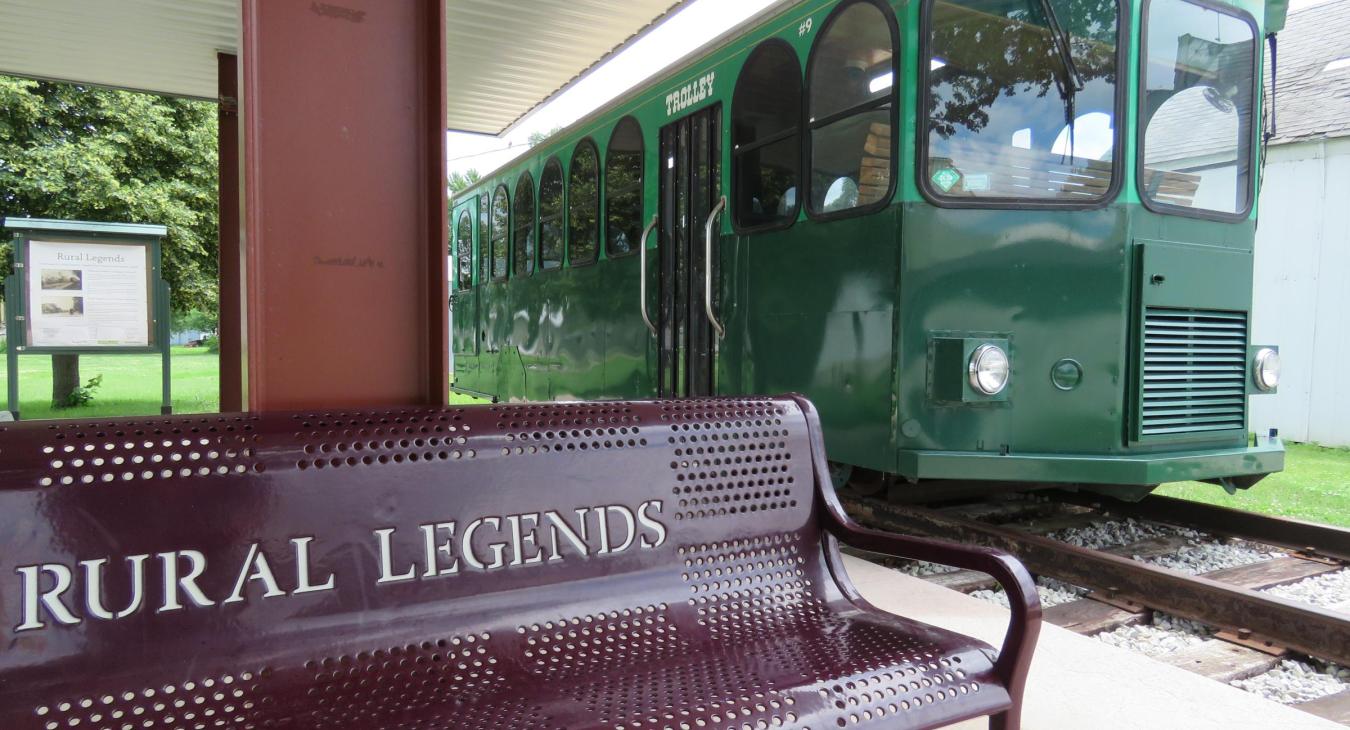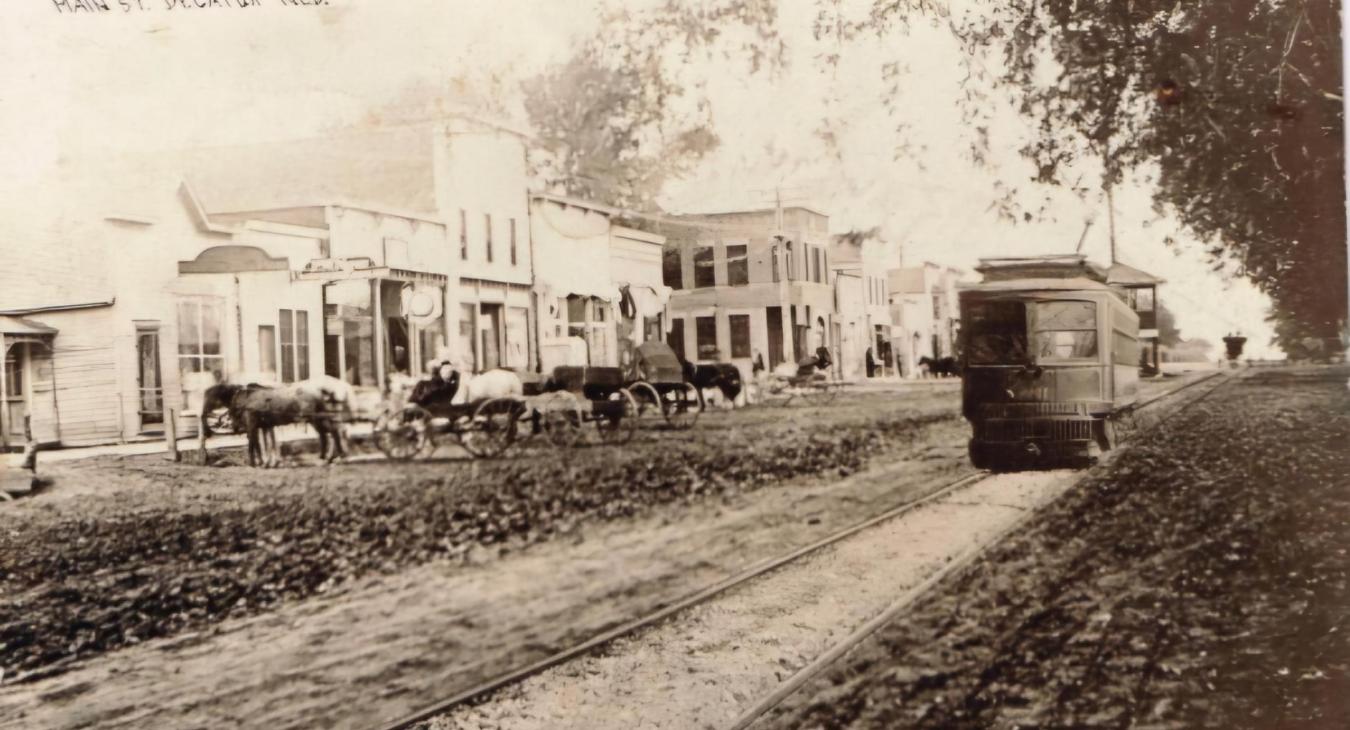By Tim Trudell
At the turn of the 20th century, Decatur was a bustling town. With a population north of 1,300, it was more a city by Nebraska standards. So it made sense that a streetcar ran along tracks from the Missouri River through downtown.
Only the streetcar didn’t actually exist. It was a genius marketing scheme. Why not create postcards featuring a Decatur streetcar? Few people outside of Decatur, and maybe Burt County in northeast Nebraska, would know the difference.
As years passed, some people swore the community did have a streetcar, but, in reality, the postcard featuring the trolley was nothing more than early Photoshop.
“They wanted a railroad for years, and the whole town was built on the assumption that they would have a railroad,” said Jane Judt, president of the Decatur Museum board. “But it never came to be. So, I suppose, you know, this was a way of attracting customers to their businesses.”
While two postcards featured a streetcar, one recommended passersby visit Byram’s Drugstore, Judt said. HC Byram was also a banker, she said.
The story of the Decatur streetcar was included as part of the Byway of the Arts, a 2015 project highlighting three Burt County communities - Decatur, Lyons and Oakland. The Center For Rural Affairs’ project featured projects identifying a piece of each town's history.
The Rural Affairs center sought to create projects that would blend a community’s culture with tourism opportunities. Lyons chose to develop a storefront theater used for public viewing of parades and community movie nights, while Oakland built a mobile stage reflective of the town’s Swedish heritage.
As Decatur residents discussed ideas for their art project, some wanted to recognize the history of the Missouri River toll bridge, which opened in 1956 and operated under local control until it was transferred to the Nebraska Department of Transportation in 2013.
But, the condition of the toll house prevented its relocation, Judt said.
“The project then came to be by someone mentioning the postcard, and they just followed up on myths and legends of it,” she said.
Once locals agreed to create a park using a streetcar as the anchor attraction, the Decatur committee organized to handle the project needed to find it, Judt said.
With the Decatur project led by conceptual artist Matthew Mazzotta, he learned that an older streetcar, out of commission for several years, was sitting in storage in New York City. Using a $10,000 grant for the Byway of Art project, Decatur officials approved purchasing it for $5,000 on e-Bay.
“Apparently that was a mistake, but the person selling it sold it to him anyway, because it was going to a community for an art project,” Judt said. “It kind of came together.”
With the streetcar - it was actually a trolley - purchased, officials had to figure out how to get it to Decatur.
“Matthew had to drive it four days to get it here,” Judt said. “And, then, they had several trips through town letting people ride.”
In the end, Decatur residents did get to hop aboard their version of a streetcar for a jaunt through town, bringing truth to the myth of Decatur having a streetcar. It was just a century after the postcard first appeared.
With the streetcar parked at Trolley Park, about a block south of 7th Street on Broadway, the vehicle's engine was removed, leaving it stationary.
A small gazebo, bench and a few historical note placards and flower beds add color to the park.
With a table and benches inside, the streetcar is used for small gatherings.
The first event, in November 2015, focused on spooky stories, with Halloween having just passed, Judt said.
“We told ghost stories of the community that were passed down,” she said. “I mean, they weren’t just made up. We had heard them from several generations, and so it was interesting way to start out.”
Since then, the streetcar park has been the scene for tales of rural legends, author talks and band performances, Judt said. There have also been community movies hosted there, she said.
Carolers have performed at the park during the holidays, Judt said.
While the streetcar came to symbolize Decatur’s place on the Byway of Art, the village actually has a unique history.
Decatur’s history among Euro-Americans traces back to the 1804 Lewis and Clark expedition, when their Corps of Discovery team camped along the river bank.
In 1854, Peter A. Sarpy and Clement Lambert of Bellevue, along with Henry Fontenelle, built log houses near Wood Creek and operated a trading business with the Omaha tribal nation on behalf of the American Fur Company.
Then, in 1856, Decatur became the second town incorporated in Nebraska, behind Bellevue. It was named after Stephen A. Decatur, who arrived in the area in 1841 and lived with the Omaha Nation. He later worked at the trading post.
Situated along the Missouri River, it seemed ripe for development and growth. But, as towns competed to be located along the railroad in the early 1860s, Decatur was ignored. Since rail transportation was faster and more reliable than ferries and barges on the then-untamed Missouri River, communities along the railroad enjoyed more growth than others.
Decatur saw its population dwindle to 800 early in the 1900s. It's now about 400 people, Judt said. In 1984, Decatur Public School merged with the Lyons district.
“That's kind of prevented growth of Decatur,” she said. “But it seems to be a pretty popular place for recreation on the river.”
As Decatur settled on its version of historical art to be shared on the Byway of Art, it took dozens of volunteers to make it happen, Judt said. From people hauling gravel to the site to others laying the railroad tracks used for the streetcar display, Judt said the project wouldn't have been successful without volunteers.
But, in the end, Mazzotta created an art piece, she said.
“We’re the ones who came up with the idea, but then he kind of pulled it all together,” Judt said.


